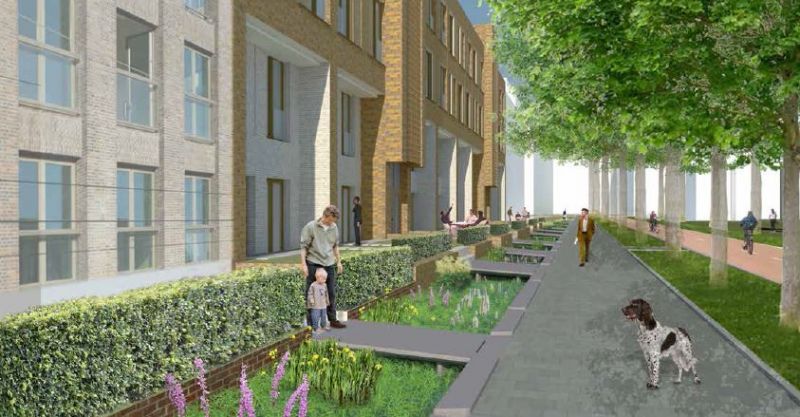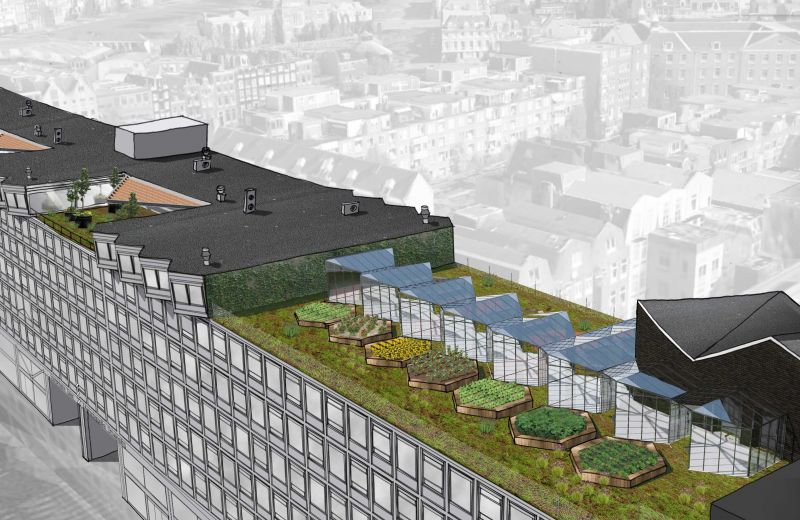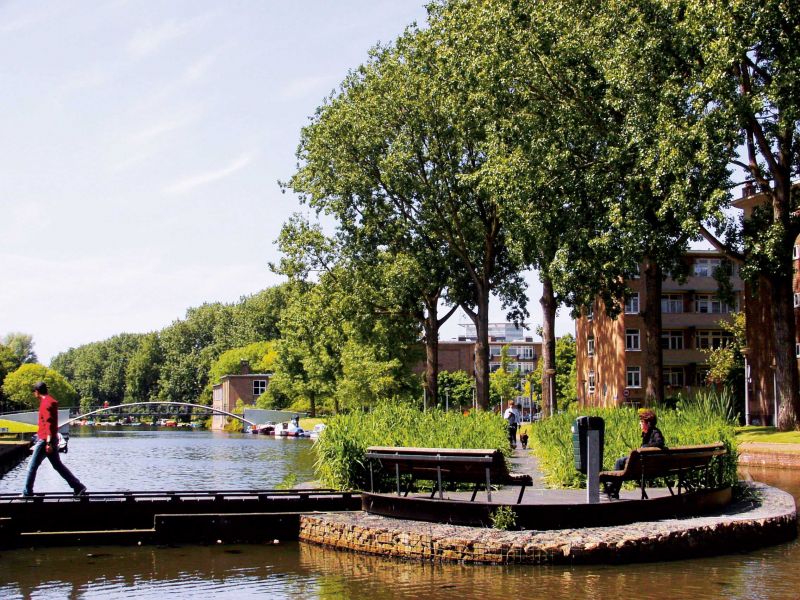I am Amsterdam Rainproof
Published on by Robert Brears, Founder of Our Future Water, Young Water Leaders, Mitidaption & Author (Springer Nature, Wiley) in Technology
Amsterdam is a global leader in using water sensitive urban design (WSUD) principles to manage water sustainably and be resilient to climate change.
What is WSUD?
The International Water Association has officially launched The IWA Principles for Water Wise Cities that outlines a framework to assist urban leaders and professionals to develop and implement their vision for sustainable urban water and resilient planning and design in their cities.
One of the key themes of the Principles is the concept of WSUD, which is the integration of urban planning with the management, protection and conservation of the urban water cycle that ensures water management is sensitive to natural hydrological and ecological cycles. WSUD activities include:
- Managing runoff from all rainfall events as much as possible
- Maintaining or improving water quality (surface and groundwater)
- Managing, protecting and restoring waterways and wetlands
- Retaining native vegetation and natural landform
- Protecting public drinking water source areas
- Safeguarding the quality and availability of water resources for the future
I am Amsterdam Rainproof
Amsterdam, recently ranked 4th in the world by Arcadis for managing its water resources sustainably, has implemented its Amsterdam Rainproof concept, which is the city’s platform that promotes activities and stimulates different stakeholders to create a more resilient city for dealing with extreme rainfall.
The aim of Amsterdam Rainproof is to activate, connect and stimulate citizens, city builders, officials, entrepreneurs and housing corporations to make the city more rainproof. To date numerous projects have been initiated throughout the city that contribute towards Amsterdam becoming rainproof, as well as using water beneficially, including pilot green strips, rooftop gardens and constructed wetlands.
Kop Zuidas’ pilot green strips
In the new residential area on the Kop Zuidas, the city and its utility Waternet have installed a pilot water retardant green strip along the street. The green strip is around 35 cm lower than the surrounding area and collects rainwater from the streets and roofs of nearby houses. The temporary water storage solution can hold water for up to 24 hours in the strip sand, after which it will infiltrate into the soil. If there is excessive rainfall, the water will overflow to rainwater drains or nearby surface water.

An edible rooftop garden sprouts up
The public roof of the new hotel Zoku has greenhouses shaped as hexagons, which grow edible plants and herbs as well as a variety of attractive plants. The roof captures rainwater for crop growth with the produce sold at the large open kitchen onsite: enabling visitors to enjoy local food.

A new constructed wetland along the canal
A constructed wetland has been developed in the Erasmusgracht allowing for the purification of polluted rainwater from the area. The polluted rainwater is discharged into a separate settling tank, then into a ditch, from which it will be purified by the constructed wetland. After purification the clean water will be discharged into the Erasmusgracht.

The take-out
For cities to effectively manage water sustainably and be truly resilient to climate change using WSUD both the public sector and private sector needs to come to the party.
*Robert C. Brears is the author of Urban Water Security (Wiley) and founder of Mark and Focus. Urban Water Security argues that, with climate change and rapid urbanization, cities need to transition from supply-side to demand-side management to achieve urban water security.
Attached link
http://markandfocus.com/2016/10/12/i-am-amsterdam-rainproof/Media
Taxonomy
- Ecosystem Management
- Habitat
- Pollution
- Sustainability
- Stormwater
- Urban Water
- Constructed Wetlands
- Climate Change Resilience